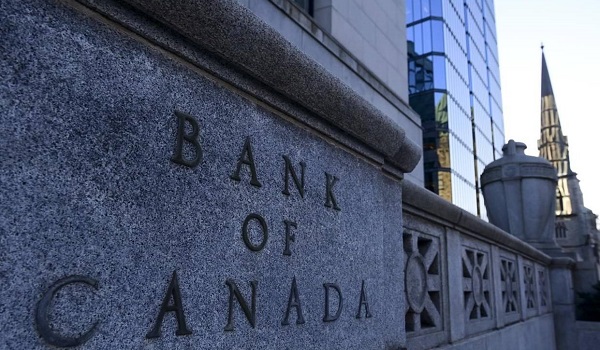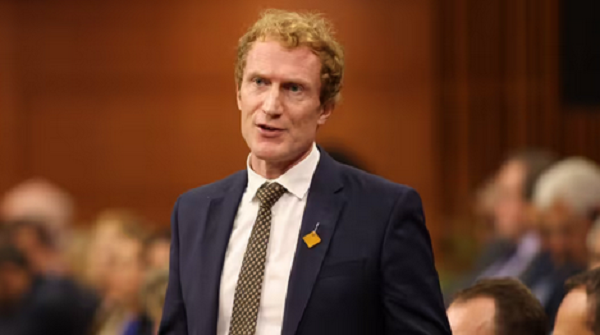Continuous fall in inflation rate, cementing case for Bank of Canada rate cut
Canada’s inflation rate is steadily moving back down to the Bank of Canada’s 2-per-cent target, solidifying an already strong case for the central bank to cut interest rates again next month.
The Consumer Price Index rose at an annual rate of 2.5 per cent in July, down from 2.7 per cent in June and matching analyst estimates, Statistics Canada said Tuesday in a report. It was the lowest annual inflation rate since March, 2021.
Inflationary pressures are easing in many areas, with prices for passenger vehicles, travel tours and electricity falling from a year earlier. The housing sector – a persistent area of financial pressure – is also showing signs of slight moderation.
Before the CPI release, the consensus view among economists and investors was that the Bank of Canada would cut interest rates by a quarter of a percentage point at each of its three remaining announcements this year, starting with the Sept. 4 decision. The report did nothing to alter that view.
“An inflation report like this seals the deal for another [quarter-point] rate cut at the Bank of Canada’s September meeting,” Tiago Figueiredo, macro strategist at Desjardins Securities, wrote in a client note. “It is also likely to keep central bankers cutting rates for the next few meetings.”
The U.S. Federal Reserve is widely expected to join in the action next month and cut interest rates for the first time this cycle. The Fed has held the target range for its federal funds rate at 5.25 per cent to 5.5 per cent for just over a year.
At the July rate announcement, the Bank of Canada’s six-person governing council said that it was putting more emphasis on downside risks to the economy and the possibility that inflation could undershoot the 2-per-cent target on the way down. This marked an important shift in how the central bank is approaching its monetary-policy deliberations.
Higher interest rates are weighing on the economy, particularly in the labour market, where the unemployment rate has risen to 6.4 per cent. That’s nearly two percentage points higher than a historic low two summers ago.
“We need growth to start picking up,” Governor Tiff Macklem told a news conference last month. “We need job creation to start picking up, to absorb the excess supply in the economy and get inflation sustainably back to target.”
Some measures of core inflation – which strip out volatile movements in the CPI – cooled last month. On a three-month annualized basis, the central bank’s preferred measures of core inflation rose by an average of 2.7 per cent in July, down from 2.9 per cent in June.
Consumer prices rose 0.4 per cent in July from June, in figures that were unadjusted for seasonality. Gasoline was a key contributor to the increase: Those costs rose 2.4 per cent during the month.
Grocery prices rose 2.1 per cent in July on an annual basis, matching the increase in June. Groceries have experienced a pullback from peak increases of roughly 11 per cent in late 2022 and early 2023.
Conversely, there are several products that are experiencing price cuts. For example, the price of passenger vehicles fell 1.4 per cent in July, year-over-year. This is being driven by the used-car segment, which has seen prices tumble by 5.7 per cent over the past year as inventory levels improve.
Shelter costs rose by 5.7 per cent on an annual basis, down from a 6.2-per-cent pace in June, and the first reading below 6 per cent since December. With interest rates in decline, this is easing some pressure on mortgage interest costs. While those costs have soared by 21 per cent year-over-year, that is down from peak increases of roughly 30 per cent in 2023.
Still, a large portion of homeowners will be renewing their mortgages at higher interest rates over the next two years – something that is factoring into central bankers’ discussions.
“There is a risk that consumer spending could be significantly weaker than expected in 2025 and 2026, given the number of households likely to be renewing their mortgage at higher rates,” read a summary of deliberations for the Bank of Canada’s July rate cut.
Thus far, the bank has lowered rates by a quarter-point at each of its previous two decisions, taking the benchmark lending rate to 4.5 per cent from 5 per cent.
Mr. Macklem said last month that the central bank is not on a “predetermined path,” but also that it’s “reasonable to expect further cuts” to its policy rate if inflation subsides as expected. The BoC projects an average annual inflation rate of 2.3 per cent in the third quarter, which runs from July to September. It expects inflation will return sustainably to its 2-per-cent target next year.
“With inflation appearing to be under control, the Bank of Canada has more leeway to set policy in response to downside risks to the economy stemming from the rise in the unemployment rate,” Andrew Grantham, senior economist at CIBC Capital Markets, wrote in a report.
This article was first reported by The Globe and Mail













